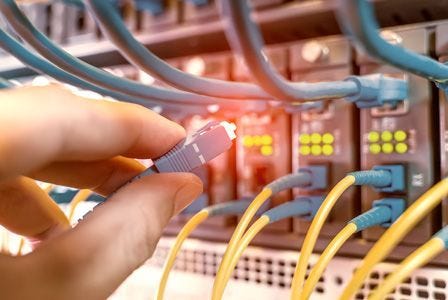

Patch Leads Buying Guide
When connecting (or "patching") one electronic or optical device to another for signal routing, an electrical or optical cable known as a patch cable, patch cord, or patch lead may be used.
Patch cords connect devices of varying types (such as a switch linked to a computer or a switch linked to a router, for example).
You will first need to assess your requirements before selecting a patch lead that is suitable for your needs. Do you need a coaxial, twisted pair, or fibre optic cable? What is the category (e.g. Cat5, Cat6 or Cat6A etc.) or grade (e.g. single mode or multimode) of the network? What length of patch cord will you need?
These questions are crucial and will help you choose the ideal patch lead for the project you are working on at your home or business now and in the future.
What are patch leads?
Patch cables are electrical or optical cables that link one electronic or optical device to another for signal routing.
A patch cable or patch cord is a length of cable with connectors on both ends that are used to connect one device to another. Fibre patch cables and RJ45 patch cables, such as LC fibre patch cables and Cat6 RJ45 patch cables, are used in Ethernet networks predominantly but also have other uses.
Patch cables are frequently utilized at the work area in offices and in wiring closets, data centres and computer rooms. They are also used in the home and small office environments.
Connection Types:
The connection type will most likely be the first thing you need to assess. Decide if you need a lead that can handle fibre optic, twisted pair, or coaxial connections.
Check to see how many ports are on the patch panel before you buy it, as this will help you determine the quantity of patch leads required for your project.
Performance:
Most connection types have different performance speeds. Take performance into consideration as well.
Fibre optic connections are the fastest and offer the best performance but will require you to run fibre optic cable to each port on your patch panel and will be more expensive in terms of installation costs.
Coaxial connections are ideal for broadcast applications, whilst twisted pair cables are the best option for Ethernet cabling. Twisted pair is the least expensive to install, and is therefore the most commonly used.
Capacity:
Capacity is another important factor to consider when it comes time to buy. How many ports are in the patch panel? How many total ports are available within the data rack?
Where space is limited, slim Ethernet patch leads are available. These can save up to 40% space and make cable management easier. For fibre optic networks, 2mm patch leads are available as an alternative to a standard 3mm lead.
Wiring Type:
For those who want to enjoy amazing voice and video quality, fibre optic patch cords are ideal. The alternative for superior quality video is coaxial patch cable.
These are some of the factors to consider before buying a patch lead, but don't stress if you aren't sure at first. If you have reviewed your options and are still unsure which option may be best for your project, call our team for assistance.
Recent Articles

Test Network Cabling & Patch Cords FAST with the New DATATESTER by CABAC
Testing LAN cables is quick and easy when you’ve got the new CABAC DATATESTER on hand. This budget LAN cable tester is perfect for contractors who need to test data and coaxial cable for correct termination.
View Products
Exploring the Advantages of Thin Patch Leads
For Australian data installers, selecting the right network components is critical to achieving the performance and reliability that your customers expect. Among these components, the humble patch lead plays a crucial role in interconnecting various devices.
View Products
FOBOT Buying Guide
In this informative article, we will provide a basic buying guide for FOBOTs or “Fibre Optic Break Out Trays” so that you can choose the right product for your specific needs.
View Products
What is a FOBOT?
In this article, we will explain what a FOBOT is and where they are used. We will also describe how a FOBOT works and the important role this component plays in managing and distributing optical fibres efficiently. So, if you're looking to learn all about FOBOTs, make sure to read this article...
View Products
What is the difference between OS1 and OS2 Singlemode Optical Fibre?
This technical article delves into the differences between OS1 and OS2 Singlemode fibre optics, including their core characteristics, performance specifications, and ideal applications.
View Products




















